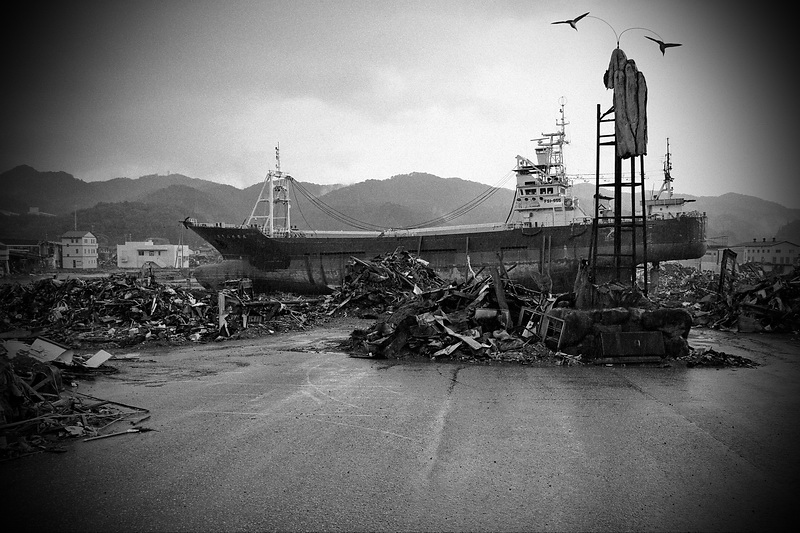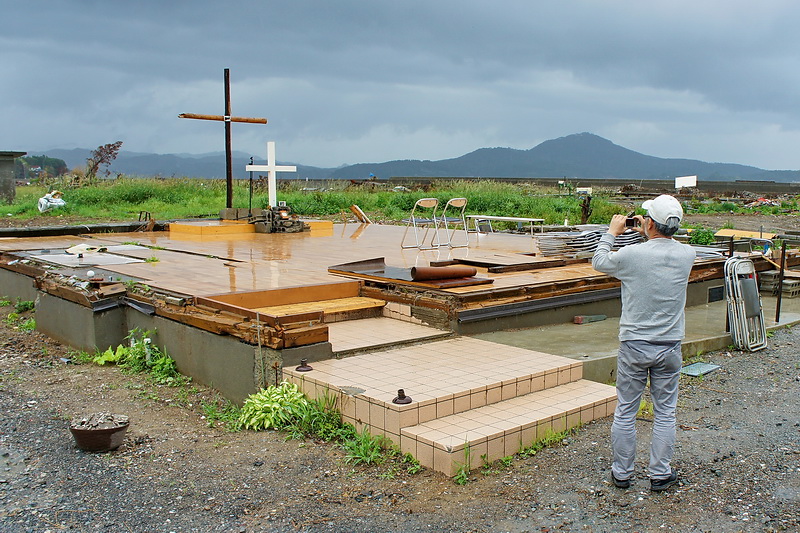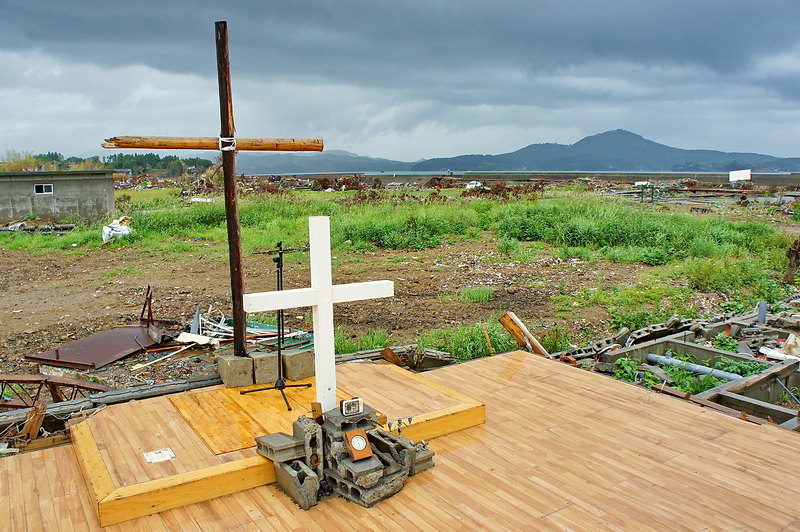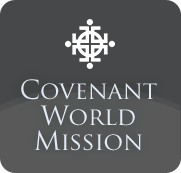As one comes into the east side of Kesennuma the unfolding scene is simply horrifying. This is the area where large fuel tanks at the mouth of the harbor were knocked loose and punctured by the first wave. Then the leaking fuel caught on fire and subsequent waves washed over the town with burning fuel. The result was a huge conflagration that didn’t go out for almost three days. When the fires subsided and the oily water receded all that remained were the crushed, twisted and charred debris of what was once a thriving port and heavily populated town. In place of homes, stores and warehouses one sees numerous large ships washed hundreds of meters inland and now lying stranded amidst the rubble.
Look closely and you’ll find what’s left of the Shishiorikarakuwa train station. It’s a long name for a very small station. We got to the station by climbing an embankment, crossing the tracks and hopping up onto the platform. What we found was that little or no cleanup has been done there even now, three and a half months after the tsunami. Several cars are wedged into the gap between the station building and the platform at crazy angles. Inside the building one finds all sorts of debris. Walk out the front door and there is a small rotary where taxis stopped and turned around and it looks like someone has cleared that area a bit. In the middle of the rotary stands what’s left of some sort of decorative statue that includes two seagulls soaring over what looks like a rocky coastline. But what dominates the view from there is the huge ship in the background, lying on dry land several hundred meters from the nearest water. In another corner of the station office lies a clock, frozen at 2:46… the time everything began to shake. These painful images depict a world of things gone so terribly wrong.
After driving through more of the port area we proceeded to the south end of the city and were able to find the exact location where the Kesennuma First Bible Baptist Church once stood. So little is left, and yet what we saw there told another powerful story.
There are no walls, no doors, no windows and no roof. But there is a place of gathering. Look beyond the rubble and you see the inadequate seawall, the bay, and the hills in the distance. But what stands front and center in this scene are the clocks and the crosses. The frozen clocks indicate the time when everything changed, and so very much ended. And yet the cross tells a counter-story. The cross speaks of something that has not ever changed and will never change. The cross speaks of something that has no end. Words like temporal and eternal sound woefully cliche, but the contrast really is compelling. And there sits the broken church in the midst of all the rubble and debris, embracing the wonderful paradox of now and forever, pain and joy, darkness and light, death and life.
Have things gone terribly wrong in this scene? Absolutely!
Is there reason for hope in the midst of all that is broken, hurt and crying? I guess each of us has to answer that one on our own… but the message of the church, the living body of Christ would seem to offer a pretty strong clue particularly in this location.






will be praying for your team as you help out there.
Report This Comment
06.27.11 at 7:47 am